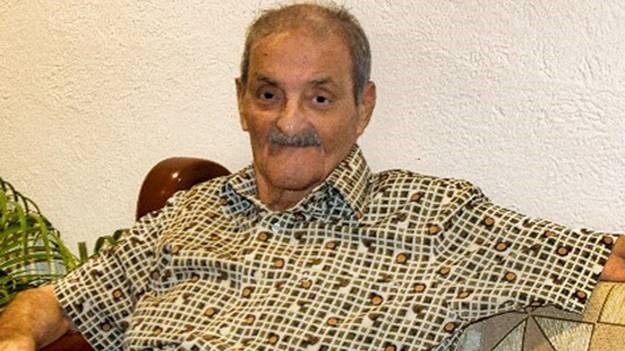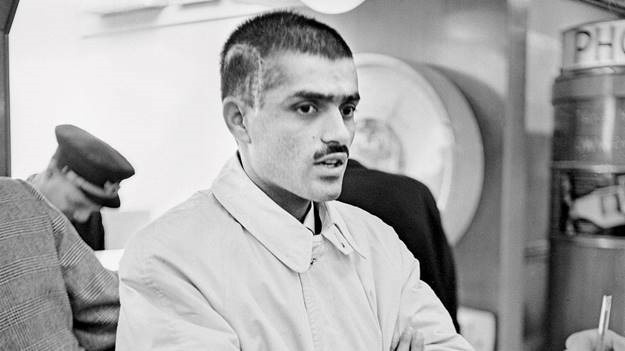From ‘hovering between life and death’ after a bouncer fractured his skull at Barbados in 1962, to celebrating his 90th birthday today, India’s oldest Test captain Nari deserves a badge of honour
Article by Clayton Murzello | Mid Day
The stitches on the right side of Nari Contractor’s head are visible at London Airport on April 17, 1962, a month after his skull injury sustained in the West Indies. Pic/Getty Images
When are you starting to play cricket again?”
It’s nearly 62 years since Nari Contractor got asked this question by Dr Chandy at Christian Medical College, Vellore, in Tamil Nadu.
Former India captain Contractor turns 90 today—a day he may never have seen had he not heeded Dr Chandy’s advice.
A few weeks prior, Dr Chandy had inserted a metal plate in Contractor’s head, as a follow up to an operation caused by a lifter from West Indian fast bowler Charlie Griffith in the Indians versus Barbados game of the 1961-62 series in the West Indies. The plate was removed in 2022.
Contractor spent his days recovering while the Indian team, who he had captained in the first two Tests of the five-match series, dealt with Frank Worrell’s fiery West Indians.
At Vellore, the next medical facility Contractor checked into after New York’s Presbyterian Hospital, he had to be coaxed into making his way to Dr Chandy’s room. The doctor could have visited his patient instead of the other way around. But good doctors are the best psychologists too, so he insisted on Contractor undertaking the 300-metre walk.
Back to the question. A stunned Contractor wondered how Dr Chandy could expect him to play again, considering what the delivery from Griffith had reduced him to. In the words of Berry Sarbadhikary, who reported on the tour, Contractor “hovered between life and death.”

Contractor at his Colaba residence on Wednesday
Dr Chandy remarked, “I want to tell you [Contractor] in plain and simple English that if you want to be a vegetable for the rest of your life, don’t ever play cricket again.”
On leaving the doctor’s room, Contractor soon found the wherewithal. Not only did he return to first-class cricket the following season to play for his beloved Gujarat Ranji Trophy team and nearly get picked for India again (in 1967-68), he also served his sport in a quiet and efficient manner.
Courage was a quality he displayed even before his near-death situation in 1962. In the 1959 Test against England at Lord’s, he continued to bat for his 81 after having his ribs broken through an express Brian Statham delivery in the second over of the Test. Breathlessness played a role in Contractor not reaching his hundred, but he took Australian legend Keith Miller’s breath away. In his expert comments piece for a newspaper, Miller suggested that Contractor be accorded the Victoria Cross for his bravery.
Contractor ended his first-class cricket career in 1970-71. From the house of Tatas, he joined Mafatlal as personal assistant to the Chief Executive, according to the January 24, 1971 issue of Sportsweek, in which he backed Ajit Wadekar’s side to give West Indies a run for their money. He was right, as India won 1-0.
Contractor went about his duties at Mafatlal without having much to do with the game. But one day, he received a telephone call from Madhav Mantri, the then Bombay Cricket Association president, asking what could Mafatlal do for Mumbai cricket in the face of a Ranji Trophy title drought in the second half of the 1980s. A fast bowling scheme headed by Frank Tyson soon took shape and changed the face of Mumbai cricket; India’s fast bowling stocks rose in the bargain.
When it was decided that the bowling scheme would need a foreign head coach, Contractor was sent to England by his employers to find one. He met several coaches there who were willing to come over and head the scheme. But they couldn’t provide a blueprint and Contractor had to return to the city without zeroing in on a coach. He then contacted Tyson in Australia and convinced him to come over.
Although the scheme didn’t go the distance, it produced enough fast bowling talent for it to be rated successful.
Tyson later came to India to conduct courses for coaches so the coaching machinery was put in place as well.
Look at the Indian set up today. India’s bowling coach Paras Mhambrey is a beneficiary of the BCA-Mafatlal Fast Bowling Scheme and so is national selector Salil Ankola.
Amol Muzumdar, India’s women’s head coach, used to bat in the scheme. Ditto Hrishikesh Kantikar, who did a stint as head coach of the women’s team. And leg-spinner Sairaj Bahutule, who works with the Indian youth, was India’s head coach in Ireland last year as a stop-gap arrangement. Abey Kuruvilla, the tall India and Mumbai fast bowler, was the first success story of the scheme. He is now BCCI’s General Manager, after a stint as India selector.
All the above owe it to Tyson and Contractor as well, for getting the late England fast bowling terror to these shores. Contractor was also involved in the Talent Resources Development Officer (TRDO) wing as the head of West Zone as well as Cricket Club of India’s Cricket for Care coaching scheme.
Indeed, Contractor has lived a life of fulfilment, layered with a generous slice of integrity and commitment.
He has made countless friends along the way and he’ll miss many of them. Like his India teammates, his rival captain in 1962, Sir Frank Worrell, the decorated cricket writer Prabhu and well-travelled Dicky Rutnagur, who also covered that tour. They donated blood to ensure Contractor’s first operation went smoothly. And most of all, he will feel the loss of his wife Doli (passed away in 2022), who was with him all the way just like he was there for her. That said, Contractor’s family members have kept him warm and cheerful.
It’s time to raise a toast to India’s oldest living Test captain, a living example of where picking up the pieces, overcoming pain, and displaying admirable courage can take you.

